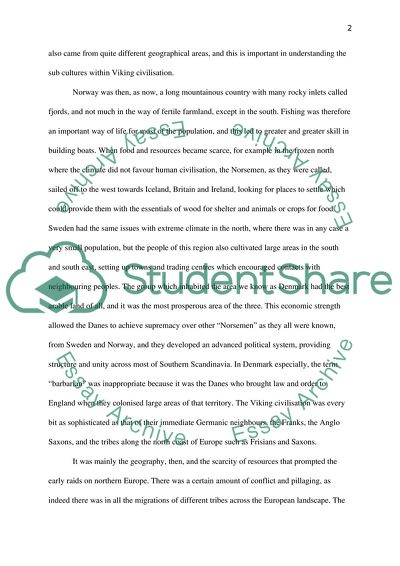Cite this document
(The Viking World Essay Example | Topics and Well Written Essays - 1500 words, n.d.)
The Viking World Essay Example | Topics and Well Written Essays - 1500 words. https://studentshare.org/history/1740888-the-module-has-the-title-the-viking-world-why-do-you-think-this-title-was-chosen-support-your-arguments-with-evidence-from-the-various-aspects-of-the-viking-age-which-you-have-studied-during-the-course-of-this-module
The Viking World Essay Example | Topics and Well Written Essays - 1500 words. https://studentshare.org/history/1740888-the-module-has-the-title-the-viking-world-why-do-you-think-this-title-was-chosen-support-your-arguments-with-evidence-from-the-various-aspects-of-the-viking-age-which-you-have-studied-during-the-course-of-this-module
(The Viking World Essay Example | Topics and Well Written Essays - 1500 Words)
The Viking World Essay Example | Topics and Well Written Essays - 1500 Words. https://studentshare.org/history/1740888-the-module-has-the-title-the-viking-world-why-do-you-think-this-title-was-chosen-support-your-arguments-with-evidence-from-the-various-aspects-of-the-viking-age-which-you-have-studied-during-the-course-of-this-module.
The Viking World Essay Example | Topics and Well Written Essays - 1500 Words. https://studentshare.org/history/1740888-the-module-has-the-title-the-viking-world-why-do-you-think-this-title-was-chosen-support-your-arguments-with-evidence-from-the-various-aspects-of-the-viking-age-which-you-have-studied-during-the-course-of-this-module.
“The Viking World Essay Example | Topics and Well Written Essays - 1500 Words”. https://studentshare.org/history/1740888-the-module-has-the-title-the-viking-world-why-do-you-think-this-title-was-chosen-support-your-arguments-with-evidence-from-the-various-aspects-of-the-viking-age-which-you-have-studied-during-the-course-of-this-module.


